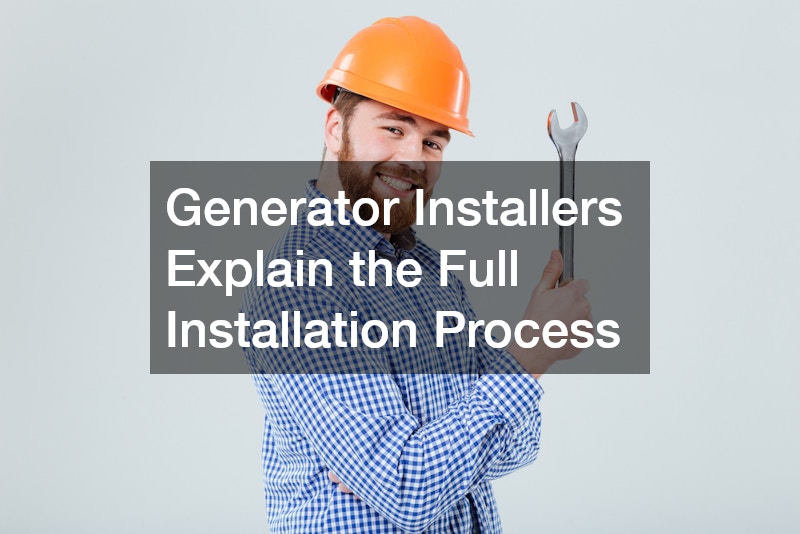
In this article, we will delve into the complete generator installation process as explained by experienced generator installers. Whether you are looking to install a backup generator for your home or a larger unit for commercial purposes, understanding the steps involved can help ensure a smooth installation. Knowing the basics and preparing adequately can make all the difference in your generator installation experience.
Video Source
Generator installations vary widely depending on the type and location of the unit. It is essential to explore all aspects of the installation process to make informed decisions. By considering everything from power needs to regulatory compliance, you can avoid pitfalls that may complicate your installation project.
In the sections that follow, we will break down the major components of the generator installation process, providing insights from professionals in the field. Understanding these stages is crucial for both homeowners and businesses aiming to ensure the reliability of their power supply.
Before any installation can take place, there are crucial preliminary steps that need to be addressed. This includes site assessments, evaluating power needs, and ensuring local compliance. A proper site assessment helps identify the best location for the generator while assessing any potential hazards.
Evaluating your power needs is essential for determining the size and type of generator that will be most beneficial for your situation. This step involves considering your current consumption levels and anticipating future needs. Working with a professional installer can provide clarity on making the best choice for your unique circumstances.
Local compliance is another critical aspect of the preliminary steps in the installation process. Each area may have specific regulations regarding generator installation, including zoning laws and permitting requirements. An experienced installer will be familiar with these regulations and can guide you through obtaining any necessary permits.
Understanding the different types of generators is essential for choosing the right one for your needs. The options typically include portable, standby, and inverter generators, each of which serves distinct purposes. Portable generators are popular for their versatility and can be easily transported to various locations as needed.
Standby generators offer a more permanent solution, typically connected to a home’s electrical system. These generators automatically kick in during a power outage, providing seamless operation and peace of mind. Their installation process is more complex due to the need for proper electrical connections and sometimes plumbing work.
Inverter generators, on the other hand, are designed to be lightweight and fuel-efficient. They produce less noise and are perfect for low-power applications, making them a great option for recreational use. Understanding the strengths of each type will help you make informed decisions, ensuring your generator installation meets your needs effectively.
The nuts and bolts of the installation process include site preparation, electrical connections, and any necessary plumbing work. Site preparation might involve clearing space, leveling the ground, and ensuring adequate ventilation for the generator. Proper site preparation is critical to ensuring the generator’s efficiency and performance over its lifespan.
Once the site is ready, the actual installation of the generator begins. This often includes the critical step of making electrical connections, which must be done according to the manufacturer’s specifications and local electrical codes. Professional installers have the expertise to make these connections safely and effectively, preventing future electrical issues.
In some cases, plumbing work may be required, especially for units that run on fuels like natural gas or propane. Properly connecting these fuel lines is vital for the safe operation of the generator. Understanding what goes into the physical installation process will prepare you for what to expect on installation day.
Once the generator is installed, maintenance becomes key to ensuring its longevity and performance. This includes routine checks and a servicing schedule designed to identify any potential issues before they escalate. Regular maintenance also helps ensure that your generator operates effectively when you need it most.
Setting up a servicing schedule with your installer can streamline the maintenance process. Many professionals offer maintenance packages that include periodic inspections and tune-ups. This proactive approach can extend the life of your generator and enhance its reliability during outages.
Additionally, being aware of some simple maintenance tasks can empower you as a generator owner. Keeping the area around the generator clear, checking oil levels, and ensuring that air filters are clean are simple ways to maintain your system. Understanding these tips can help keep your generator operating at peak performance.
Understanding the complete installation process of generators, from initial planning to long-term maintenance, equips homeowners and business owners with the information they need for a successful installation. By working closely with qualified installers, you can ensure that your generator system meets your energy needs safely and effectively. A well-planned installation and diligent maintenance are essential for the proper functioning of your generator.
